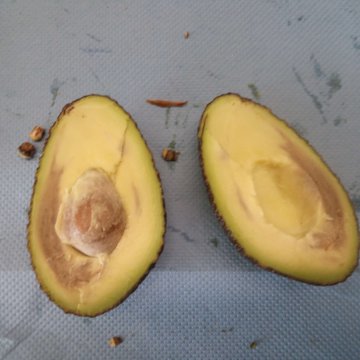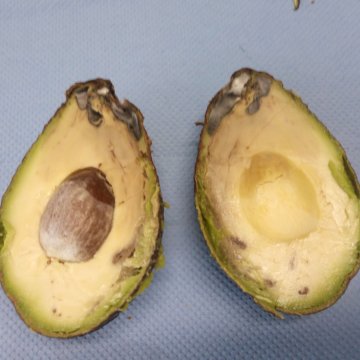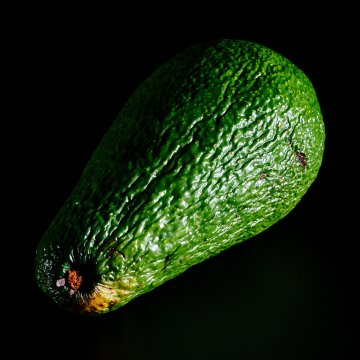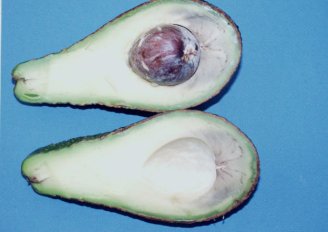
Avocado disorder and diseases
Good quality avocados are free from diseases and disorders. Customers are not willing to purchase fruit presenting rots or damaged skin. Furthermore fruit that looks good on the outside but presenting brown flesh or soft texture will not lead to happy customers. There are dozens of different diseases and disorders, which are not always easy to recognize. A good diagnosis of the fruit’s health is important. By recognizing the symptoms of a disease or disorder, it can be linked to the cause. If you know the cause, you know what measures can be taken to prevent the disease or disorder in the future.

Disease management avocado
Examples of avocado disorders and diseases
-

Handling damage
Rough handling can easily lead to damage to the avocados, at each stage of the supply chain. For example, the effect of rough harvesting can manifest itself in bruises and injuries at a later stage. Bumpy transport ride to the packing station will develop similar symptoms. This mechanical damage not only makes the fruit unattractive, but often also leads to secondary rot development.
-
Chilling injury
Symptoms of chilling injury for avocado include irregular coloration (dark patches), a bit sunken in the skin. The flesh will show problems like flesh greying, vascular browning and pulp spot. This disorder is caused by storage below minimum temperature. Sensitivity and severity of damage depends on the duration and depth of the temperature. Adapting fruit progressively to low temperatures might reduce chilling injury sensitivity -
Vascular browning
Too high or too low temperatures during growth of the avocado may cause problems in the vascular bundles in the fruit flesh, causing vascular browning. It normally starts at the blossom end of the seed and is already visible when fruit is cut, but becomes more pronounced thereafter -

Internal browning
This disorder can be observed when the fruit is cut in half. The avocado pulp may become brown as a result of ageing or suffocation during CA transport. The disorder usually spreads in the flesh from the blossom end of the fruit. The tissue will not ripen anymore, it becomes rubbery and sometimes smells badly -

Fungal rot
Several types of pathological diseases can occur, such as Anthracnose, Dothiorella and Rhizopus. Fungal infections may be visible on the outside via small brown spots on the skin or large patches, which can continue in the flesh as the fruit ripens. If the infections entered via the stem end, they will cause stem end rot, visible as discolouration of the flesh at the stem end, which progresses through the pulp through the vascular bundles. The infection may already have happened in the orchard, but often the decay only becomes visible during post harvest -

Lenticel damage
Some avocado cultivars have a more rough skin, with protruding lenticels. These lenticels, when damaged, can cause black spots, a kind of 'measles', on the skin. The lenticels are damaged more easily when fruits are fully hydrated (e.g. because of rain during or just before harvest or recent irrigation). -

Shrivelling
Avocados are vulnerable to water loss. During ripening the fruit may lose 5-6% of it starting weight. Shrivelling of the skin is the consequence of (excessive) water loss. The risk of shrivelling symptoms increases with lower relative humidity, higher temperature, longer storage time and damage to the skin. Controlling water loss starts right at harvest by bringing the fruits into the shade.
"Good orchard sanitation and good harvesting practices, like not harvesting with rain and careful handling, help to reduce rots greatly."
